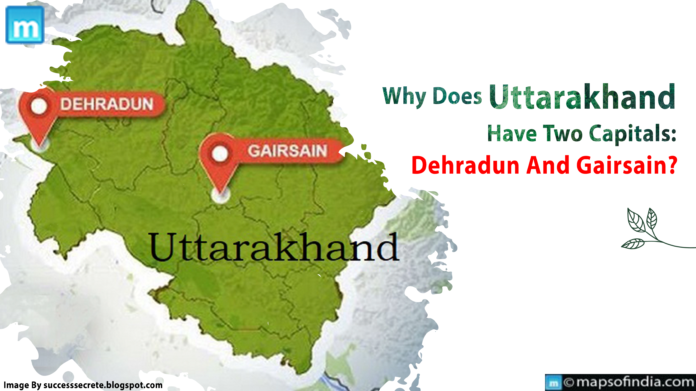Uttarakhand, situated in the lap of the Himalayas, has two capitals: Dehradun and Gairsain. This distinct administrative setup is influenced by historical, geographical, and political reasons, forming the identity and governance structure of this northern Indian state.
Dehradun – The Winter Capital
Uttarakhand. With its beautiful landscape and moderate climate, Dehradun has long been a center for education, culture, and governance. Historically, it had been chosen as Uttarakhand’s interim capital following its establishment in 2000. Dehradun was chosen as the major capital due to its historical significance as a British administrative headquarters during the colonial era. Its pleasant climate and scenic surroundings drew colonial authorities, who constructed an administrative headquarters here. This tradition persisted after independence when Dehradun became the capital of the former Uttar Pradesh hill areas and later the newly established state of Uttarakhand.
Gairsain – The Summer Capital
Gairsain, on the other hand, embodies the aspirations of Uttarakhand’s hilly regions, notably those in the state’s center and east. Gairsain, situated in the Garhwal Himalayas, is an important cultural and historical hub. It is thought to be where the sage Ved Vyas composed the Mahabharata. Despite its isolated location and inadequate facilities, Gairsain was named Uttarakhand’s summer capital in 2020, marking a significant milestone in the state’s governance framework. Gairsain’s elevation to summer capital underscores the state government’s commitment to reducing regional inequities and supporting equitable development. The measure is intended to decentralize governance and bring decision-making closer to the people, particularly in isolated hill districts. By rotating administrative activities between Dehradun and Gairsain, the government hopes to ensure a fair allocation of resources and attention to all regions of Uttarakhand.
Need For Two Capitals
The decision to create two capitals comes from the need to redress regional disparities and promote equitable development throughout Uttarakhand. By decentralizing administrative functions, the state administration hopes to bring governance closer to the people, particularly those in the hill areas. This act is more than just symbolic; it demonstrates a commitment to inclusivity and democratic governance. Furthermore, Uttarakhand’s two capitals reflect the state’s distinct geography and culture. Dehradun represents the plains and foothills, whereas Gairsain represents the aspirations and legacy of the mountainous regions. This duality not only honors the state’s rich history but also recognizes the unique problems and opportunities given by its diverse topography.
Arguments Against The Two Capital System
Critics claim that having two capitals increases administrative costs and logistical issues. Some claim that the benefits exceed the expenses, as it promotes a more balanced and inclusive approach to governing. Furthermore, the symbolic significance of Gairsain as the summer capital strikes a chord with the people of Uttarakhand, instilling a sense of pride and belonging.
From a practical standpoint, Dehradun is the key administrative center throughout the year, with well-established institutions and infrastructure to support day-to-day governance activities. Meanwhile, Gairsain symbolizes Uttarakhand’s rich cultural legacy and geographical diversity, hosting legislative sessions and official functions throughout the summer months. To summarize, Uttarakhand’s two capitals, Dehradun and Gairsain, exemplify the state’s dedication to inclusive governance and regional development.




